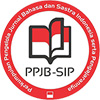The Implementation of Tongue Twister Method to Improve Students’ English Pronunciation
Sari
This study aims to determine the effectiveness of the use of the tongue twister method on students' pronunciation. This research employed quantitative research with a quasi-experimental design. The population of this study is the second-grade students of SMAN 1 Campalagian, 150 students, and the sample consists of 32 students who are divided into two groups; the control group (16 students) and the experimental group (16 students). The control group was taught using the song technique while the experimental group was taught using the tongue twister method. The researchers used test (Pre-test and post-test) as the instrument in the study. Based on the test results, the researchers conclude that the average post-test score is higher than the pre-test, those are (60>55) and (75>65). This research indicates that there is a significant difference in value between the two. Therefore, it can be concluded that students make improvement in learning pronunciation through tongue twisters.
Teks Lengkap:
PDF (English)Referensi
Arikunto, S. (2002). Penelitian Tindakan Kelas. Jakarta: PT. Bumi Aksara.
Arikunto, S. (2006). Metode Penelitian Kualitatif. Jakarta: Bumi Aksara.
Arikunto, S. (2006). Prosedur Penelitian Suatu Pendekatan Praktek. Jakarta: PT. Rineka Cipta.
Brown, H. D. (1994). Principle Of Language Leraning and Teaching. New Jersey: Practice Hall.
Brown, H. D. (2007). Language Assessment : Principles and Grouproom Practices. New york: Pearson Education Company.
Depdiknas. (2006). Standar Kompetensi SMA/MA. Jakarta: Dharma Bakti.
Djamari, M. (2008). Tehnik Penyusunan Instrumen Tes dan Non tes. Yogyakarta: Mitra Cendekia Press.
Fahruli, R. P. (2020). The Effect of Tongue Twister On Students' Pronunciation.
Hammond, J. A. (1992). English for Special Purpose: A handbook for Teacher of Adult Literacy. Sydney: NCELTR, Marquarie University.
Harmer, J. (2004). The Practice of English Language Teaching. Harlow: Longman.
Hornby, A. S. (1995). Oxford Advanced Learner's Dictionary of Current English . London: Oxford University Press.
Jones, D. (1958). An Outline Of English Phonetics. Cambridge: Cambridge University Press.
Kelly, G. (2000). How to Teach Pronounciation. England: Longman, Pearson Education Limited.
Kriegel, D. (2005). Teaching ESL versus EFL Principle and Practices . English Teaching Forum.
Kriegel, D. (2005). Teaching ESL VS EFL Principle and practice. English Teaching Forum, 9.
Kunandar. (2008). Penelitian Tindakan Kelas: sebagai pengembangan profest gruru. Jakarta: PT. Rajagrafindo Persada.
Leavy. (2005). Practical Research : Planning and Design. New Jersey: Prentice-hall.
Lutfiani, D., & Astutik, I. (2015). Using Tongue Twister to Improve Student's Pronounciation. ISSN, 110-113.
Machcackova, E. (2012). Teaching English Pronounciation to Secondary School Students With Foccus on "th" Consonant . Brno: Masaryk University BRNO.
Margono. (2004). Methodology Penelitian Pendidikan. Jakarta: Rineka Cipta.
Margono. (2004). Metodologi Penelitian Pendidikan. Jakarta: Rineka Cipta.
Na'im, M. J. (2014). Students's Difficulties in Learning English Pronounciation by Using Drilling Technique at Second Grade Studnets' of MtsN Aryojeding in The Academic Year 2013/2014. Tulungagung: State Islamic Institute (IAIN) .
Nazir. (2005). Vocabulary Developing Scills . Yogyakarta: Yayasan Kansius.
Qurnia, U. (2008). The Use of Songs to Improve Students Achievement in Pronounciation, an Action Research with the 11th Graders of MANU Limpung Batang in the Academic Year 2008/2009 . Semarang: Tarbiyah Faculty, Walisongo State Institute for Islamic Studies.
Ramelan. (2003). English Phonetics. Semarang: UNNES Press.
Ramini, & Ginting. (2002). English for The Academic Purpose. Yogyakarta: Andi Offset.
Rebecca. (1993). The Pronounciation of English . Australia: Cambridge.
Richards, Jack, C., & Willy, A. R. (2002). Methodology in Language Teaching: An Anthology Of Current Practice. New york: Cambridge University Press.
Rohman, M. (2016). The Use of Tongue Twister Technique to Improve EFL Students Pronounciation: A Grouproom Action Research at the 10 Grade of SMA Unggulan Nurul Islami Semarang In the Academis Year of 2015/2016. Semarang.
Ruth, & Stere. (1991). Vocabulary Sentence and Language Education. Cambridge: Cambridge University.
Seidlhofer, B. (1996). Pronounciation. Oxford: Oxford University.
Stewart. (2014). Intergrating Language Skill through Tongue Twisters Games. England: English Teaching Forum.
Sudjana, N. (2001). Penelitian dan Penilaian Pendidikan. Bandung: Sinar Baru.
Sugiyono. (2001). Metode Penelitian. Bandung: CV Alfa Beta.
Sugiyono. (2001). Metode Penelitian Pendidikan. Bandung: Alfabeta.
Sugiyono. (2005). Metode Penelitian Pendidikan : Pendidikan Kuantitatif, Kualitatif, dan R&D. Bandung: Alfabeta.
Sugiyono. (2007). Statistik Untuk Penelitian. Bandung: CV Alfa Beta.
Sugiyono. (2016). Metode penelitian pendidikan. Bandung: Alfabeta.
Sukardi, D. K. (1983). An Analysis Study On Student's Difficulties in Pronouncing Centering Diphthons. FKIP UNPAK.
Susanto, A. (2007). A Srategic Management Approach, CSR. Jakarta: The Jakarta Consulting Group.
Syamsuddin, & Damayanti. (2011). Metode Penelitian Pendidikan Bahasa. Bandung: Remaja Rosdakarya.
Trask. (1996). English Phonetics and Phonology : A Practical. Third Edition. New York: Cambridge University Press.
Turumi, Y. L., Jamiluddin, & Salehuddin. (2016). Using Tongue Twister To Improve The Pronouunciation Of Grade VIII Students. e-journal of English Language Teaching Society (ELTS), 1-2.
Widianto. (2013). Statistika Terapan : Konsep dan Aplikasi SPSS Dalam Penelitian Bidan Pendidikan, Psikologi dan Ilmu sosial Lainnya. Jakarta: Gramedia.
Yanto, M. (2013). Jadi Guru Yang Jago Penelitian Tindakan Kelas. Yogyakarta: C.V Andi OFFSET.
Zulfikar. (2016). Pengantar Pendekatan Statistika. Yogyakarta: Deepublish.
DOI: https://doi.org/10.33387/tekstual.v20i2.5286
Refbacks
- Saat ini tidak ada refbacks.
Tekstual terindeks oleh:



